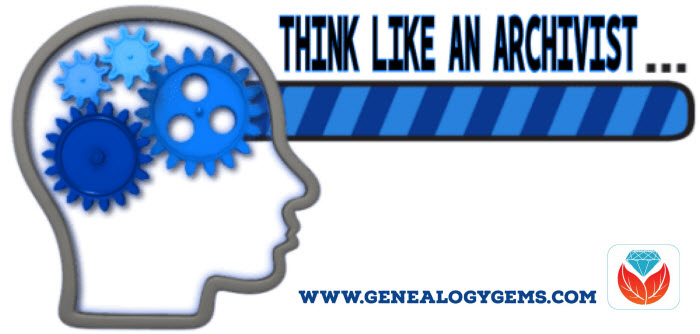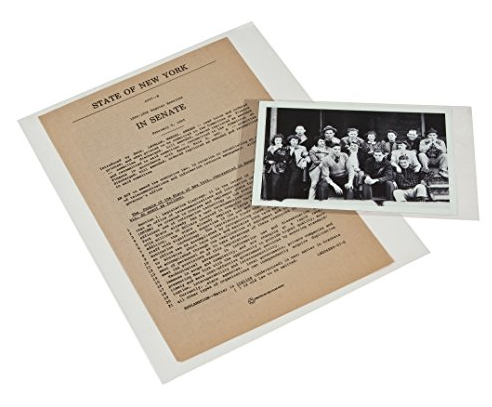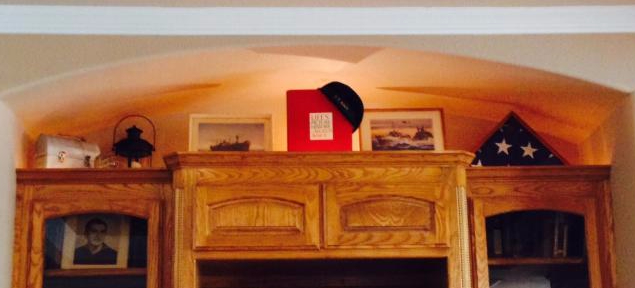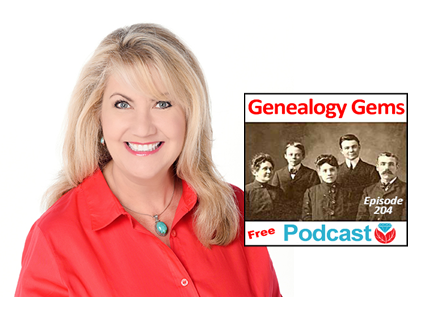by Lisa Cooke | Nov 6, 2017 | 01 What's New, Archive Lady, Archives, Beginner, Organization
You may be doing some “home archiving” without even realizing it, if you’re the keeper of any family photos, documents, heirlooms, or artifacts. Professional archivist and genealogist Melissa Barker offers these tips for the family historian and keeper of the family archive.

I have always said that “home archiving” is something genealogists do, perhaps without ever calling it that. So family historians can definitely benefit from learning how archivists work. Here are five ways to think like an archivist.
5 Home Archiving Tips for Family Historians
 1. Learn to preserve family artifacts.
1. Learn to preserve family artifacts.
Archivists are always educating themselves on how to preserve certain items that have come to their archives. Genealogists inherit family heirlooms all the time. Learning how to preserve them is thinking like an archivist.
Tip: Preserving an item means keeping it from further deterioration. This may mean putting it in special storage materials, keeping it out of strong light, and storing it in a place that isn’t too hot, cold, or humid. Click here to read an article on humidity and your family archive.
 2. Organize your “collection.”
2. Organize your “collection.”
A very important job for archivists is keeping their records collections organized so they know what they have and can pull them efficiently. Genealogists, as home archivists, would also benefit from keeping their genealogical records organized.
Tip: Get inspired! Click here to catch some tips on organizing your digital photos from Denise Levenick, The Family Curator and author of How to Archive Family Keepsakes: Learn How to Preserve Family Photos, Memorabilia and Genealogy Records.
 3. Store your treasures carefully.
3. Store your treasures carefully.
Archivists are always careful to use special materials such as archival file folders and boxes to put records and artifacts into for preservation. Genealogists should use archival materials to preserve and store their records just like archivists do.
Tip: Click here to read my article on how to archive family history documents. It’s packed with great tips and recommended products to store your items safely.
4. Keep the stories that go with your artifacts.
 Telling the stories of the people that have come before us is also something that archivist try to do with the records they have in their care. Archivists do this by sharing their records collections with the public through displays, exhibits, and open houses. Genealogists should tell their ancestor’s stories by sharing their family histories with their families and passing down their ancestor’s stories to the next generation.
Telling the stories of the people that have come before us is also something that archivist try to do with the records they have in their care. Archivists do this by sharing their records collections with the public through displays, exhibits, and open houses. Genealogists should tell their ancestor’s stories by sharing their family histories with their families and passing down their ancestor’s stories to the next generation.
Tip: Create a meaningful display of artifacts in your own home. Group together items that tell a story, preferably unique, eye-catching items. Add framed copies of documents and photos (keep originals safely tucked away). Click here for some fantastic ideas from Lisa Louise Cooke on sharing your family history with the non-genealogists in your family.
5. Archive your own mementos.
Archivists collect today for tomorrow! Many archivists collect documents and artifacts that are produced today so they can be preserved for tomorrow. They collect items such as the high school graduation program, digitizing the local newspaper, and that local diner menu.
Genealogists do the same thing in their “home archiving” by collecting and preserving a funeral card, digital photographs they took at the grandbaby’s birthday, and the marriage invitation you received for your niece’s wedding.
 Home Archiving, National Archiving: It’s all in the Genealogy Gems Podcast
Home Archiving, National Archiving: It’s all in the Genealogy Gems Podcast
Did you know I’m on Lisa Louise Cooke’s Genealogy Gems Podcast now? I chime in frequently with that “offline” archival perspective that’s so important in our research. Click here to see the list of recent episodes. In Episode 211, publishing this week, I report on a fascinating way you can help make collections from the National Archives more accessible to everyone. Why not listen in? It’s free!
Disclosure: This article contains affiliate links and Genealogy Gems will be compensated if you make a purchase after clicking on these links (at no additional cost to you). Thank you for supporting Genealogy Gems!
by Lisa Cooke | Jul 19, 2015 | 01 What's New, Brick Wall, images, Photographs, Research Skills, Technology
 The forensic investigator pulls up to the crime scene and snaps a fresh set of rubber gloves. She props open the trunk of the car and carefully, slowly, sweeps a tube of florescent light back and forth inside the trunk, watching with an eagle eye for the glimmer of something that shouldn’t be there.
The forensic investigator pulls up to the crime scene and snaps a fresh set of rubber gloves. She props open the trunk of the car and carefully, slowly, sweeps a tube of florescent light back and forth inside the trunk, watching with an eagle eye for the glimmer of something that shouldn’t be there.
It’s a familiar scenario – well, that is, if you watch Court TV or CSI or one of the other of myriad of television shows featuring forensics. If you’re like me, you’re fascinated by this type of investigation. Criminal investigators are not all that different from genealogists: they are looking for dead people and trying to find out what happened to dead people.
So it will be be no surprise that this recent news item grabbed my attention:

Image from the National Library of Wales website. Click to view.
Poetry and pictures drawn in the margins of a medieval manuscript–and then erased–have been rediscovered using modern imaging techniques. The Black Book of Carmarthen is the oldest known surviving Welsh language manuscript. Written in 1250, it’s now “throwing up ghosts from the past after new research and imaging work revealed eerie faces and lines of verse which had previously been erased from history,” according to a National Library of Wales blog post.
“A combination of ultraviolet light and photo editing software” were used to better see ancient doodles that had been erased from the margins. The process revealed “images, and snatches of poetry which are previously unrecorded in the canon of Welsh verse.”
We’ve featured several types of forensic analysis as applied to genealogy over the years. In fact, forensic genealogy principles inspired my popular presentation, How to Reopen and Work a Genealogical Cold Case (if you’re a Premium Member of this website you can sign in right now and watch it under Premium Videos).
Criminal investigators are not all that different from genealogists:
they are looking for dead people and trying to find out what happened to dead people.
Genealogy Gems Podcast Episodes 89 and 90 features Dr. Robert Leonard, a forensic linguist featured on an episode of Forensic Files on TV. It was such a riveting interview that I brought him back for Premium episode 48 where his brother Dr. George Leonard joined us. And way back in the pioneer days of this podcast (2008) Episode 18 featured “Vehicular Forensics.”
 It was my genealogical take on using alternative light sources on not the trunks of cars, but rather their faded license plates as they appear in old photos. That episode has been “retired” but will soon be
It was my genealogical take on using alternative light sources on not the trunks of cars, but rather their faded license plates as they appear in old photos. That episode has been “retired” but will soon be  remastered and available for listening (stay tuned to the free Genealogy Gems email newsletter for the publication announcement.) In the meantime you can read about it in depth in my very first book Genealogy Gems: Ultimate Research Strategies.
remastered and available for listening (stay tuned to the free Genealogy Gems email newsletter for the publication announcement.) In the meantime you can read about it in depth in my very first book Genealogy Gems: Ultimate Research Strategies.
Have you looked to see what lurks on the pages and photos of your ancestors? Email me and we may share it in an upcoming blog post or episode.
by Lisa Cooke | Sep 26, 2014 | 01 What's New, Blogs, Genealogy Gems Podcast, Inspiration, Research Skills, Volunteer
 The newest episode of the Genealogy Gems podcast is now ready for listening! This is a really special episode with a story I think many of us can relate to. It’s about a man who started researching the life of a woman he never met–he doesn’t even know who her descendants are. And yet he feels compelled to learn her story. Learn how and why, and about some of his successes and challenges in the podcast episode.
The newest episode of the Genealogy Gems podcast is now ready for listening! This is a really special episode with a story I think many of us can relate to. It’s about a man who started researching the life of a woman he never met–he doesn’t even know who her descendants are. And yet he feels compelled to learn her story. Learn how and why, and about some of his successes and challenges in the podcast episode.

I’ll give you just one little teaser: 99 postcards found in an attic when he was 13 years old got him started. He’s held onto them for the past 38 years. Recently he finally started studying the stories on their backs. And that’s when he could see that 86 of them were addressed to a Mrs. Lizzie Milligan and postmarked between 1904 and 1925. Who was she? That’s what he is determined to know. And he’s already blogging his discoveries–in part hoping others can help him solve the mystery.
Episode 171 can be found through iTunes or by clicking here.

by Lisa Cooke | Apr 22, 2014 | 01 What's New, Craft & Displays, Inspiration
When my kids were little I would pack away some of their mountain of toys. Then every so often I would bring them back in to “play circulation” and pack up another batch. To the kids, it was like getting brand new toys!
Our recent move has been sort of like that. As I unpacked boxes of bubble-wrapped baubles it was like finding new family heirlooms all over again.
One example is quite small: a single vintage clip-on earring.
It belonged to my beloved Grandma Burkett. Even though it had lost its match long ago, I couldn’t bear to part with it. As I unwrapped the seemingly useless single earring I was immediately struck with how I could use it. I clipped it in my hair at the end of my french braid!
Later that day I went shopping with my daughter, and several people stopped to compliment the jewel and inquire about it. When I explained it originally belonged to my Grandmother, faces lit up and family history conversations started to flow. All from one little thing…
Your challenge this week: Look at what you have with fresh eyes, and share your family history with the world in little ways!
– Lisa


 1. Learn to preserve family artifacts.
1. Learn to preserve family artifacts. 2. Organize your “collection.”
2. Organize your “collection.” 3. Store your treasures carefully.
3. Store your treasures carefully. Telling the stories of the people that have come before us is also something that archivist try to do with the records they have in their care. Archivists do this by sharing their records collections with the public through displays, exhibits, and open houses. Genealogists should tell their ancestor’s stories by sharing their family histories with their families and passing down their ancestor’s stories to the next generation.
Telling the stories of the people that have come before us is also something that archivist try to do with the records they have in their care. Archivists do this by sharing their records collections with the public through displays, exhibits, and open houses. Genealogists should tell their ancestor’s stories by sharing their family histories with their families and passing down their ancestor’s stories to the next generation. Home Archiving, National Archiving: It’s all in the Genealogy Gems Podcast
Home Archiving, National Archiving: It’s all in the Genealogy Gems Podcast











